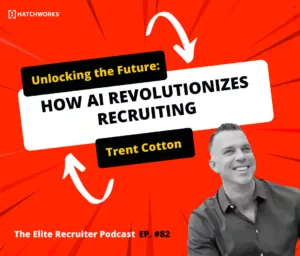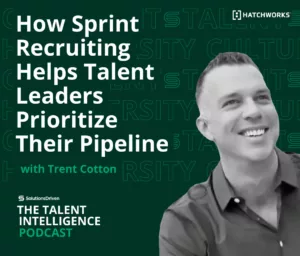Geese – The Creators of Agile Methodology
I’ll confess, I’m a nerd. I’m always reading to identify better ways to increase efficiency in recruiting. I stumbled upon an article explaining why geese fly in a V formation and the science behind why their behavioral instinct makes them such a great example of efficiency.
First, the geese flying formation conserves their energy. Each bird flies slightly above the bird in front of them, resulting in a reduction of wind resistance. The birds alternate being in the front and falling back when they get tired. In this way, the geese can fly long distances before they stop for rest. The authors of a 2001 Nature article state that pelicans who fly alone beat their wings more frequently and have higher heart rates than those that fly in formation. It follows that birds that fly in formation glide more often and reduce energy expenditure (Weimerskirch, 2001).
The second benefit to the V formation is that it is easy to keep track of every bird in the group. Flying in a formation assists with communication and coordination within the group. Fighter pilots use this formation for the same reason. If you have ever watched a group of geese fly overhead, you’ve probably heard them grunting and squawking at each other as they pass. This loud interchange is feedback to ensure each goose is fulfilling their role in the team.
One of the most interesting aspects of geese’ behavior is the intuitive nature of their efficiency. Their ability to fly long distances compared to their counterparts is primarily due to their teamwork efficiency. It’s a complicated process made to look effortless.
What recruiting teams can learn grom geese
If you compare the effortless efficiency of geese to any organization’s recruiting process, you quickly see a stark contrast. The process is usually outdated, laborious, and incredibly inefficient. There are four primary dysfunctions in most recruiting organizations, regardless of industry, size, or the team. They are:
- Everything is a Priority, which means NOTHING is a priority
- It lacks a Rhythm and opportunity for iterative improvement
- Clients and recruiters are often misaligned on the definition of success
- The feedback loop is broken
Recruiters are busy and often too stressed to attempt to be productive. Hiring managers wonder why their X number of roles cannot be filled in five days. Candidates are lost in a laborious interview process only to be forced to wait for days on end for feedback about their performance.
Normal recruiting simply doesn’t work.
Enter Agile recruiting
At HatchWorks, not only do our software development teams use Agile and Scrum to deliver high-quality products but every facet of the organization embraces the methodology, including recruiting. We use the Sprint Recruiting methodology to ignite, accelerate and succeed in recruiting. It is based on the core principles of Agile and overcomes the dysfunctions of normal recruiting. The four principles are simple:
- The SPRINT creates efficiencies
- The business defines PRIORITY
- Work in Progress Limits create FOCUS and ITERATIVE EFFICIENCY
- FEEDBACK keeps the process moving
Recruiters are able to start planning their two-week Agile recruiting sprint focused on the business’s 5-6 top roles versus the twenty or thirty it may have open. The overwhelming distraction associated with high requisition loads subsides as the Agile recruiting team focus on the most critical, manageable requisition list for two weeks. As progress is made on the top priority roles with a specified number of qualified candidates, they move on to the next one in priority. This process is repeated until at some point in the sprint, they create the capacity to recruit other roles as they wait on feedback.
Like the geese flying in a V formation, feedback is constant and keeps the process moving. The feedback from the business moves candidates quickly through the process. Communication among the team helps work be prioritized and allocated to those with the capacity to meet the goal of the two-week sprint. Feedback allows the group to adjust to changes in the industry or client demand quicker and more efficiently. The stress most feel in the traditional recruiting model becomes mitigated by what I call the “sprint instinct.” Like geese, you and your team begin to use resistance as a way to push forward with less energy.
The Hatchworks Agile recruiting team begins the day reviewing a dashboard of ranked jobs with separate swim lanes that show how many candidates are in the process. We meet for daily standups to discuss wins from the previous day and obstacles preventing success. All of our key stakeholders are on the line as we move together as one team toward our ultimate goal: Client Satisfaction.
Learn more about HatchWorks Sprint Recruiting
Sprint Recruiting was born from the chaos of traditional recruiting. Our process has become more efficient with each iteration, and our engagement with both the business and candidates increased proportionally. Sprint Recruiting guides our journey to iterative growth as we continue to innovate, iterate, and accelerate from Sprint to Sprint.
Talk to HatchWorks today to see how we can help you build the team you need to deliver your next software development project.



